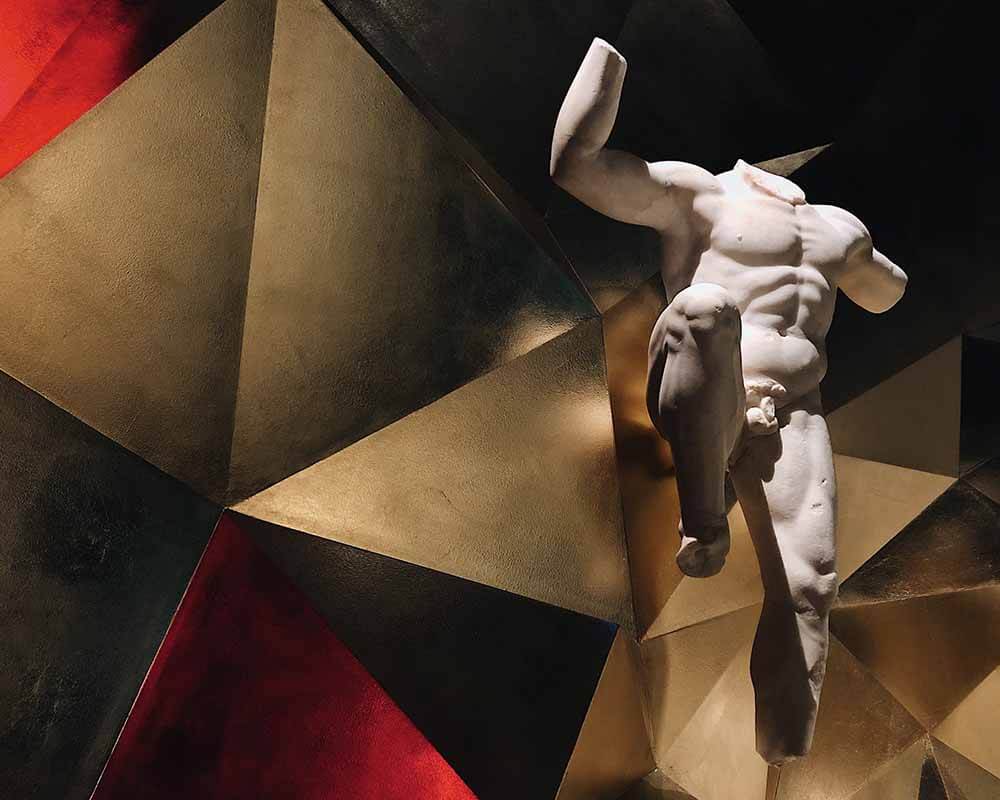"The typewriter often sings songs that cure the sadness of the heart. It is miraculous."
Charles Bukowski
You cannot think about a writer without his typewriter: from Lewis Carroll's Hammond to Virginia Woolf's Underwood, from Matilde Serao's Remington to Woody Allen's Olympia SM-3 deluxe.
Even on the big and small screen we find numerous machines that are part of the character in their own right: from the sweet Jessica Fletcher in Murder, She Wrote to the creepy Jack Torrence in The Shining, from the tormented Christian in Moulin Rouge to the writer Paul Sheldon in Misery.
Developed in the late 19th century, it was one of the first widely used devices for the rapid redaction of documents in standardised formats. Its use gave rise to a new profession, typewriting, initially reserved for women. Let's discover its origins.
In 1802 in Fivizzano, Tuscany, Agostino Fantoni invented an early, rudimentary writing instrument, very similar in the way it was printed to a modern typewriter. The invention of this tool also marks the first use of carbon paper: a paper coated on one side with a layer of dry ink, usually combined with wax, that was used to create one or more copies of a document while it was being written.
There are many inventors to whom the typewriter has been attributed, usually of different nationalities, but surely the true ancestor of the typewriter is the tacheograph, created by the Italian inventor Pietro Conti. Conti's device was the model to which Giuseppe Ravizza later referred when he created his prototype, the harpsichord typewriter: originally created as an aid to the visually impaired, it would later become the most complete typewriter until the appearance of the Remington Mod. 1 in 1873.
This model, named the Sholes and Glidden typewriter, was the first commercially successful typewriter: it took its name from the American inventor Christopher Sholes and the amateur mechanic Carlos Glidden, who made it in 1867. After several failed attempts at mass production, the machine's patent was taken over in 1873 by E. Remington and Sons, initially a war industry, and reached commercialisation with a production run of over a thousand units from 1874 onwards, later expanding production more and more, eventually selling millions of pieces worldwide, inaugurating the epic of industrial production and increasingly widespread distribution.
Ever since the earliest models, the importance of key positioning standards (e.g. QWERTY, QWERTZ, QZERTY, AZERTY, CHWERTY) was always fundamental to typing from memory: that is, without having to strain often to distinguish the keys, and secondly, to facilitate the ergonomic alternation of left and right hands. Thus was born a keyboard with an order of letters not very different from that which has come down to us in computer keyboards.
Ever since the earliest models, the importance of key positioning standards (e.g. QWERTY, QWERTZ, QZERTY, AZERTY, CHWERTY) was always fundamental to typing from memory: that is, without having to strain often to distinguish the keys, and secondly, to facilitate the ergonomic alternation of left and right hands. Thus was born a keyboard with an order of letters not very different from that which has come down to us in computer keyboards.
The Remington's production was the setting that Camillo Olivetti found in America in 1893, when, following his teacher Galileo Ferraris, he attended the first demonstration of public lighting in Chicago by Thomas Alva Edison. Fascinated by the new inventions, Olivetti spent two years in the electrical engineering department at Stanford University, bringing back to Italy the production of measuring instruments and then typewriters. The first Olivetti was thus presented at the Universal Exhibition in Turin in 1911.
In the 1950s, Olivetti launched the Lettera 22 model, designed by Marcello Nizzoli, which instantly became a status symbol for generations of journalists and writers, as well as the winner of the Compasso d'Oro in 1954. The Lettera 22 used a pressure-based writing system: each key, in fact, levered a small hammer that tapped on the inked ribbon, printing the corresponding letter on the sheet, which was embossed on the hammer. The mechanical typing process used by the Letter 22 was reliable, precise and very fast. "With vowels and consonants you make words, with words you make thoughts, with thoughts you think letters, with the Letter 22 you write them": so went a famous advertising claim.
Another cult typewriter produced by Olivetti was the famous Valentine designed by Ettore Sottsass in 1969: its main feature, also very clearly reflected in the advertising campaign, was the transportability of the machine which, unlike its predecessors, did not have an external case in which to close it, but was itself the case! The rear part of the machine was designed, in fact, as the 'closure' of the briefcase, including the handle, while the only external part was a shell-box, made of ABS, capable of protecting it from any blow and well secured to the machine thanks to two rubber side safeties.
The typewriter remains a milestone in the history of writing technology, an instrument from which many writers and journalists never parted, and therefore also linked to the history of literature and journalism; an object that is both functional and nowadays also decorative, which maintains its charm over time.






.png)





